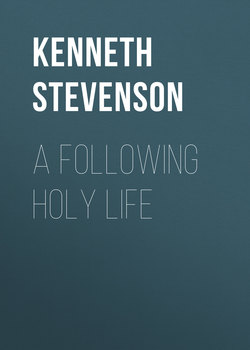A Following Holy Life

Реклама. ООО «ЛитРес», ИНН: 7719571260.
Оглавление
Kenneth Stevenson. A Following Holy Life
Отрывок из книги
Preface
Introduction: Jeremy Taylor – Life, Writings and Theology
.....
Taylor goes on to defend the practice of infant baptism, as the opening of the door to God, ‘the first ordinary current in which the Spirit moves and descends upon us’, requiring godparents (the traditional practice), not parents, as the Reformed-minded wanted. We come across the same balance that we saw in the Eucharist between sacrament and experience – ‘baptism and its effect may be separated, and do not always go in conjunction . . . the Church gives the sacrament, God gives the grace of the sacrament’. Both here, in the Discourse on Baptism in ‘Great Exemplar’ (1649), and in his baptism liturgy are to be found references to the gift of the guardian angel, a notion which he clearly likes, but will not require as a belief.[15] His overall understanding of baptism, however, has been described by Boone Porter as more Johannine (rebirth) than Pauline (dying and rising), with a strong emphasis on re-birth (John 3.5). It is certainly iconographic, as we have already suggested, by the way he uses the narrative of Christ’s baptism as the place near which the Discourse is placed in ‘Great Exemplar’ (1649), and the way he (uniquely for his time) uses that narrative in his baptism rite.
For Taylor, the key to his thinking about baptism and Eucharist is the strong relationship between mystery and sacramentality. They are God-given mysteries, yet are sacraments that operate in our lives. Like many other writers down the ages (not just post-Reformation), he holds in tension divine act and human experience in what he teaches both about baptism and Eucharist. In his study of the eucharistic theology of John Calvin (1509–64), Brian Gerrish offers three models: symbolic memorialism, which locates the sacrament in the heart of the faithful recipient (which he associates with the Swiss Reformed Ulrich Zwingli, 1484–1531); symbolic parallelism, where the sacramental event is in parallel with the work of Christ (which he associates with Zwingli’s successor, Heinrich Bullinger, 1504–75); and symbolic instrumentalism, where the sacraments are instruments of God’s grace (which he associates with John Calvin). These terms are, of course, approximations, but they were certainly around in England (and elsewhere) from the Reformation onwards. Taylor, like other seventeenth-century writers, seems to move beyond these views to what has been described as ‘effectual instrumentalism’, which places a stronger emphasis on what the sacrament does, without underplaying human appropriation of the gifts of God, expressed by the strong role of the Holy Spirit as the means of consecration.[16]
.....